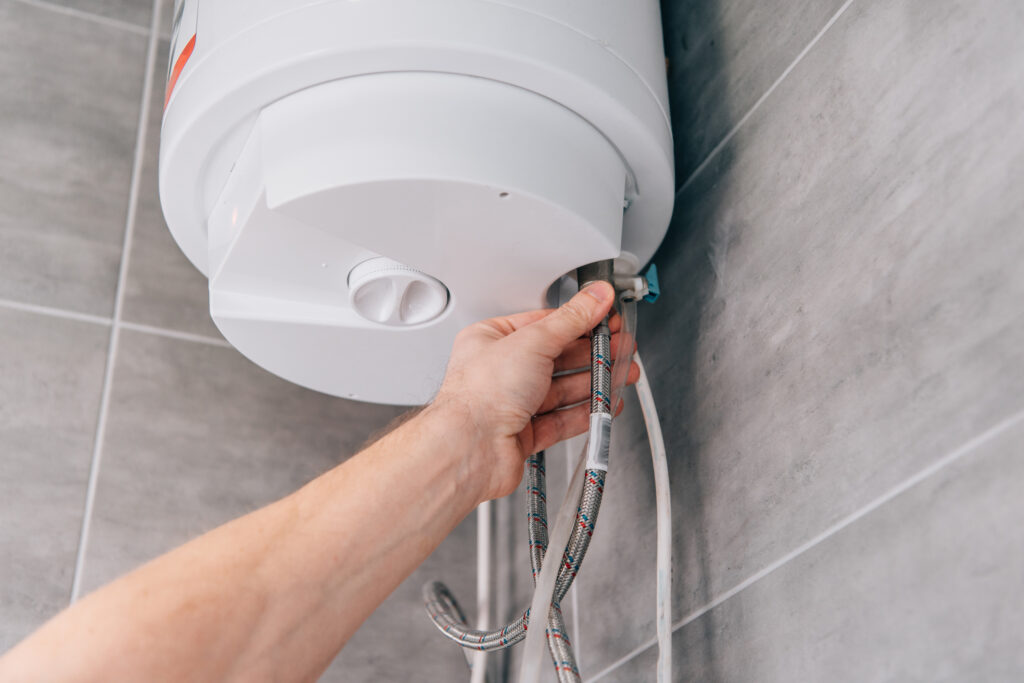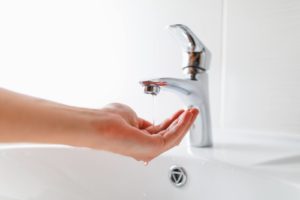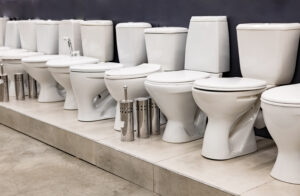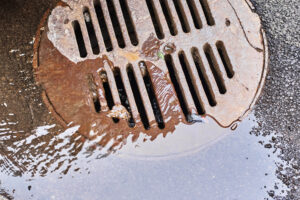Clogs are inevitable. No matter how careful we are, every household eventually faces a dreaded blocked toilet. Whether it’s from flushing the wrong item, too much toilet paper, or little ones deciding it’s a good idea to send toys on an adventure, it happens to the best of us and can quickly turn into a messy situation.
But what do you do when there’s a toilet clog and no plunger in sight? Knowing how to safely and effectively unblock your toilet without one is a valuable skill that everyone should have.
In this blog, we’ll walk you through some of the best plunger-free methods to unblock your toilet and what to do when nothing seems to work.
What Causes Toilet Clogs?
Toilets are designed with a simple but precise mechanism that relies on gravity and siphoning to flush waste away. When you flush the toilet, a flapper inside the tank lifts, releasing water into the bowl. This rush of water creates a suction that draws waste down the pipe, and the tank refills and resets for the next use.
But when something disrupts this process, a clog forms. Here are some of the most common culprits:
- Excessive toilet paper
- Feminine hygiene products
- Paper towels and facial tissues
- Cotton balls and swabs
- Dental floss and hair (It acts like a net, catching debris and worsening blockages)
- Cooking oils and fats
- Medication and harsh chemicals
Even products marketed as biodegradable or flushable can cause significant problems. They are often designed to stay durable, even when wet, so if they don’t break down quickly enough, they can accumulate in your pipes, leading to slow drainage, clogs, or even damage to your plumbing system over time.
How to Prevent Toilet Clogs
Prevention is always better than a cure, especially when it comes to plumbing. Here are some simple habits that can help you avoid future blockages:
- Provide bathroom bins, as people are less likely to flush inappropriate items if there’s a bin nearby
- Educate everyone in the household
- Be mindful of toilet paper
- Retrieve fallen items quickly
- Maintain your toilet regularly
- Keep the toilet lid closed and stop things like toys, brushes, and jewellery from falling in accidentally.
Signs of a Forming Clog
Catching a clog early can save you time, stress, and possibly even a call to the plumber. Watch out for these telltale signs:
- Slow-draining water
- Rising water levels
- Gurgling sounds
- Unpleasant odours
- Bubbling when flushing
- Overflowing toilet or outside gully trap
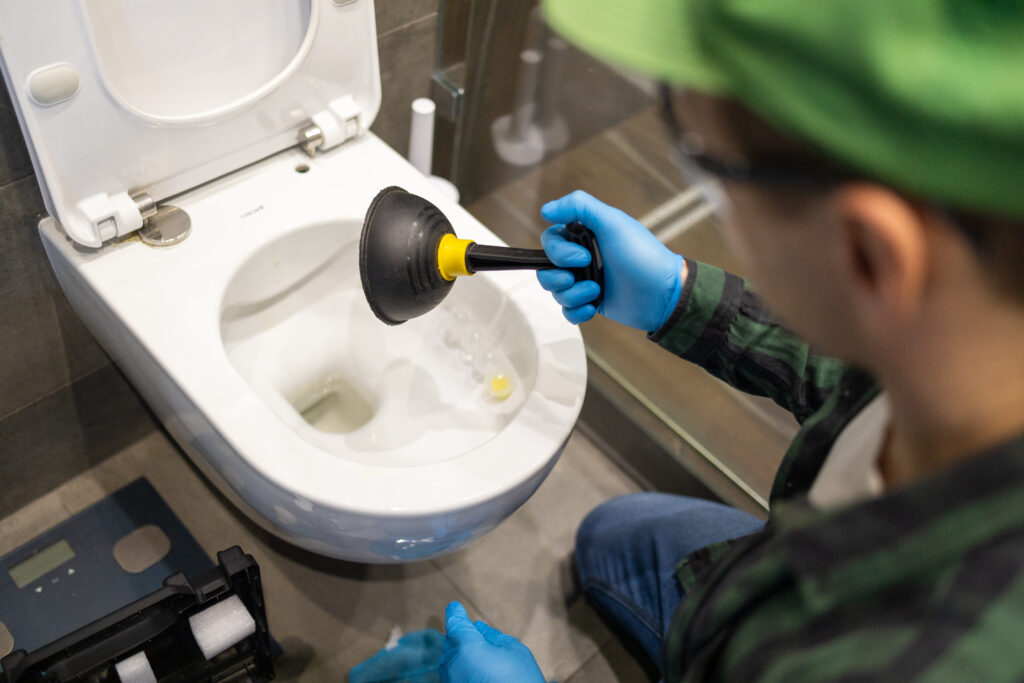
Tips For Unclogging the Toilet Without A Plunger
Stop the Overflow First
Before attempting to unclog your toilet, stop any potential overflow immediately. A toilet on the brink of spilling over is a mess waiting to happen.
How to Close the Toilet Flapper
The flapper inside the toilet tank is your first tool for stopping an overflow. Here’s how to close it:
- Carefully remove the tank lid and place it on a flat, secure surface.
- Locate the rubber flapper at the bottom centre of the tank.
- Press down firmly on the flapper to create a seal and stop water from flowing into the bowl.
- Hold the flapper down until the water in the bowl stops rising.
If that doesn’t work or you can’t reach the flapper:
- Turn off the water supply valve behind the toilet (near the floor). Turn it clockwise to stop the water flow. Don’t force it if it’s stuck, as it might break.
- Lift the float (ball or cylinder) in the tank to trick the system into thinking it’s full. You can prop it up with a small object to stop refilling.
Avoid Flushing Again
It’s tempting to flush again, but resist the urge. A second flush can send even more water into a clogged bowl, increasing the risk of messy overflow.
Remove Excess Water Safely (if necessary)
Once you’ve stopped more water from entering the bowl, it’s time to manage what’s already there:
- Put on rubber gloves to protect yourself from bacteria.
- Use a small cup or container to scoop excess water into a bucket.
- Wipe any spills with disposable towels (not your regular bathroom towels).
- Clean the base of the toilet thoroughly; standing water can damage the flooring or seep into subfloors.
Start With Liquid-Based Fixes
For minor clogs, liquid-based solutions using items you likely already have can work wonders.
Dish Soap & Hot Water
Dish soap acts as a lubricant, helping waste and debris slide more easily through the pipes. It’s especially effective when the blockage is made up of organic matter or excess toilet paper.
- Pour in the dish soap: Start by pouring about ½ cup of liquid dish soap directly into the toilet bowl. Aim for the drain hole to ensure the soap sinks below the water line and reaches the clog.
- Give it time to work: Let the soap sit for 15 to 30 minutes. During this time, it will begin to break down greasy residue and lubricate the pipes, loosening up the blockage.
- Add hot water (but not boiling): While the soap is sitting, heat a pot or kettle of water until it’s hot but not boiling. Boiling water can crack the porcelain or damage the toilet’s wax ring, so be cautious. Carefully pour the hot water into the toilet from waist height. The force from the height helps push the clog through.
- Wait and flush: Let the hot water and soap mixture sit for 5 to 10 more minutes, then try flushing the toilet once. If the water drains normally, the clog is likely cleared. If it’s still slow, you may want to repeat the process once more.
Hot Water Alone
If you don’t have dish soap on hand, hot water by itself can also be effective for loosening and breaking down soft blockages.
- Pour hot (but not boiling) water into the bowl from waist height. This creates downward pressure and mimics the force of a flush, which can help dislodge the clog.
- Allow the hot water to sit in the bowl for 20 to 30 minutes. During this time, the heat will soften or dissolve the blockage.
- If the water level in the bowl starts to drop, that’s a good sign the clog is loosening. Once the level lowers, try flushing once to see if the blockage is cleared.
Use Natural Reactions to Break the Blockage
If dish soap and hot water didn’t do the trick, don’t reach for harsh chemical drain cleaners just yet. There are powerful, eco-friendly alternatives already in your pantry that can break down stubborn clogs using natural chemical reactions. These methods are gentle on your plumbing and better for the environment.
Baking Soda & Vinegar Method
This combination creates a fizzy, bubbling reaction that helps dislodge blockages and clear your pipes without damaging them. The reaction releases carbon dioxide, which agitates the clog and helps break it apart.
- Add the baking soda: Pour 1 cup of baking soda directly into the toilet bowl. Try to distribute it near the drain opening for best results.
- Slowly add vinegar: Follow with 1 to 2 cups of white vinegar. Pour it slowly to avoid overflow, as the mixture will start fizzing and bubbling immediately.
- Let it sit and work: Allow the reaction to do its job for at least 30 minutes. For tougher clogs, leaving it overnight can yield better results. Covering the bowl with a toilet lid or towel can help trap the reaction’s pressure and improve its effectiveness.
- Observe the change: If you notice the water level starting to lower or hear a gurgling sound, that’s a good sign the clog is breaking up. If nothing happens after 30 minutes, you can repeat the process with smaller amounts of baking soda and vinegar.
This method is ideal for organic or paper-based clogs and helps maintain your pipes without causing corrosion.
Epsom Salt
If you don’t have baking soda and vinegar on hand, Epsom salt is another natural solution that works in a similar way. Epsom salt reacts with the water, causing a bubbling reaction that can help shift the clog.
- Add the Epsom salt: Pour 1 to 2 cups of Epsom salt directly into the toilet bowl.
- Wait for the reaction: Allow the salt to sit for 15 to 20 minutes. You should start to see some fizzing or bubbling as the salt begins to interact with the water and the clog.
- Follow with warm water: After waiting, pour a bucket of warm (not boiling) water into the bowl to help flush the loosened material through the pipes.
Epsom salt is not only effective but also safe for septic systems and can even leave your toilet smelling fresher too.
Use Tools You Already Have
No plunger? No problem! When you don’t have a plunger, there are several common household items that can step in as effective alternatives.
Wire Hanger as a Make-Shift Drain Snake
A wire coat hanger can be used as a simple, yet effectiv,e drain snake to reach and break up clogs lodged deeper in your toilet drain.
- Straighten the hanger, leaving a small hook at one end to catch or break up debris.
- To protect your toilet’s porcelain surface, wrap the hooked end in a piece of cloth, or cover it with tape or heat-shrink tubing. This prevents scratching or chipping inside the bowl.
- Gently insert the hooked end into the drain opening, pushing slowly until you meet resistance from the clog.
- Use a twisting and rotating motion to break up the blockage or snag any debris.
- Slowly pull the wire out, bringing trapped materials with it.
This method is great for dislodging hair, small toys, or other items stuck near the drain entrance. Just be careful to avoid scratching the toilet or pushing the blockage further down.
Toilet Brush Plunging Technique
If you have a sturdy toilet brush, you can mimic the plunging action to create suction and pressure that helps loosen clogs.
- Place the toilet brush bristles directly over the drain hole inside the bowl.
- Use a firm push-and-pull motion, similar to plunging, to create pressure changes inside the drain.
- For enhanced suction, wrap the brush head in a plastic bag, securing it tightly with a rubber band. This helps form a seal, allowing the brush to act more like a traditional plunger.
While this technique doesn’t always work as well as a real plunger, it’s a handy emergency option for light to moderate blockages.
Plastic Bottle Pressure Trick
A simple plastic bottle can generate surprising force to push clogs through the pipes, acting much like a plunger.
- Take a large plastic bottle (2 liters works well) and remove the cap.
- Fill the bottle about half to three-quarters full with warm water (not boiling).
- Place the bottle’s opening firmly into the toilet drain hole, creating as tight a seal as possible.
- Squeeze the bottle forcefully several times to push water and air into the pipes, dislodging the blockage.
Alternatively:
- Cut the bottom off the bottle, then insert the neck into the drain hole.
- Squeeze the bottle quickly and firmly to force air pressure down the drain. This method acts like a commercial toilet air blaster, pushing the clog free.
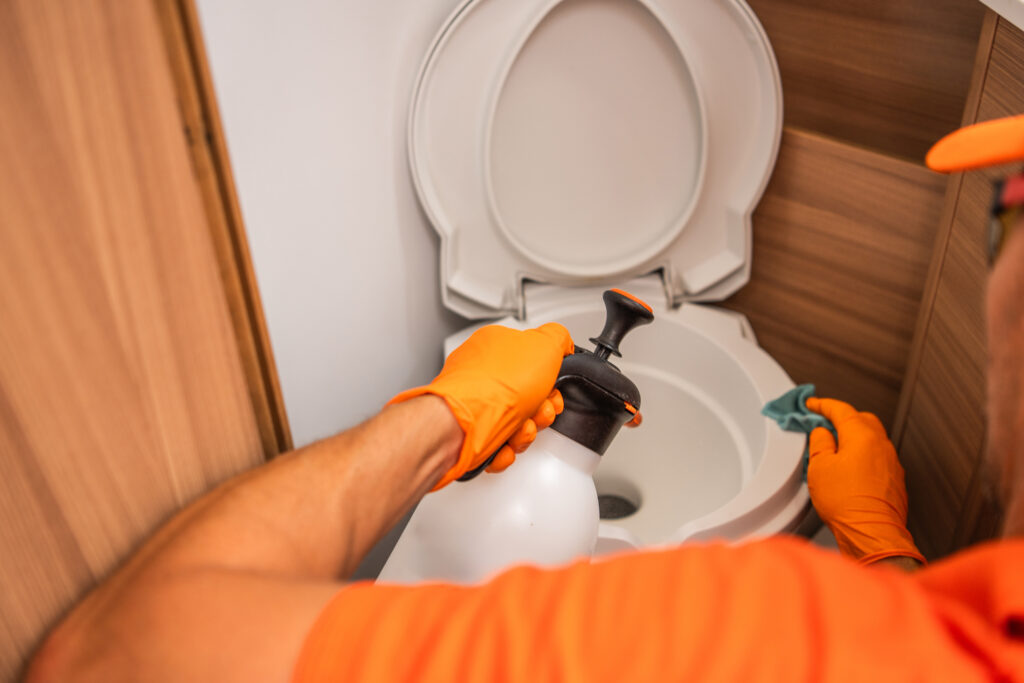
What to Do When Nothing Works
Sometimes, despite your best DIY efforts, stubborn toilet clogs just won’t budge. There are a few last-resort options to try, and if those don’t work, knowing when to call a professional plumber can save you time, money, and stress.
Using Chemical Drain Cleaners Safely
Chemical drain cleaners can be effective at dissolving tough blockages when mechanical methods fail. These products often contain powerful ingredients like sodium hydroxide or sulfuric acid that break down organic waste. However, they come with significant risks and must be handled with care.
If you decide to use a chemical cleaner:
- Always wear rubber gloves and eye protection to prevent skin or eye irritation.
- Make sure your bathroom is well ventilated to avoid inhaling harmful fumes.
- Follow the manufacturer’s instructions carefully; using more than recommended won’t speed things up and can cause damage.
- Never mix chemical cleaners with other products, as this can create toxic gases.
How to Fix a Blocked Toilet with a Snake
When clogs are deep or particularly stubborn, a toilet auger (also called a closet auger) is often the most effective tool. This specialised snake has a long, flexible cable with a corkscrew tip designed to reach and break up blockages beyond the reach of simple tools.
To use a toilet auger properly:
- Insert the curved end of the auger into the toilet bowl, pointing it down the drain.
- Turn the handle clockwise to extend the cable into the pipe.
- When you feel resistance, you’ve likely reached the clog.
- Use gentle back-and-forth twisting motions to break up or hook the blockage.
- Slowly pull the auger back out.
- Flush the toilet to check if the blockage is cleared.
Most household clogs occur within the first two bends of the drain, so a standard 3-foot toilet auger is sufficient for most jobs.
Why Bleach Is Not Recommended
Although bleach is a common household disinfectant, it’s not effective for unclogging toilets. While it kills germs, it can’t dissolve paper, hair, or solid waste, causing the blockage.
Using bleach in a clogged toilet also poses several risks:
- It can produce toxic gases when mixed with other cleaners.
- It damages your toilet’s rubber seals and parts, leading to leaks or failures.
- Repeated use can corrode your plumbing pipes.
- It contributes to water pollution once flushed.
When to Call a Professional Plumber
Knowing when to step back and call in a professional plumber can save you a lot of time, money, and frustration. While many toilet clogs can be handled with DIY methods, some signs indicate that the problem is more serious and requires expert attention.
- Multiple failed attempts with different unclogging methods: If you’ve tried various approaches, liquid solutions, household tools, even chemical cleaners, and the clog persists, it’s a strong sign that the blockage is deeper or more complicated than a simple DIY fix can handle.
- Water backing up in other drains around the house: This often signals a blockage in your main sewer line, not just the toilet drain. When wastewater can’t flow properly, it can back up through sinks, showers, or floor drains, causing widespread plumbing issues.
- Recurring clogs that come back after you clear them: Temporary fixes that don’t last usually mean there’s an underlying problem, such as pipe damage, tree root intrusion, or buildup further down the line. A professional inspection can identify and resolve these causes.
- Strange gurgling noises from your pipes: Gurgling or bubbling sounds usually mean air is trapped due to blockages or venting issues. This is a warning sign that your plumbing system isn’t draining properly and needs professional evaluation.
- Persistent foul odours that don’t go away: Lingering bad smells can be caused by sewage backups, broken seals, or hidden leaks. These odours are not just unpleasant; they indicate potential health hazards that require immediate professional attention.
Why Professional Help Matters
Professional plumbers bring much more than just tools; they offer expertise, experience, and specialised equipment to diagnose and repair plumbing problems safely and effectively.
- Accurate Diagnosis: Professionals use cameras and advanced diagnostic tools to pinpoint the exact location and nature of the clog, saving time and avoiding unnecessary damage.
- Proper Equipment: From heavy-duty augers to hydro-jetting machines, plumbers have access to equipment that can clear blockages traditional DIY methods can’t touch.
- Preventing Damage: Attempting aggressive DIY fixes on serious clogs can damage pipes, seals, and fixtures, leading to expensive repairs down the road. A plumber knows how to handle issues delicately to protect your plumbing system.
- Health and Safety: Blocked toilets can cause sewage backups, which bring harmful bacteria and pose serious health risks. Plumbers follow safety protocols to manage these hazards effectively.

Key Takeaways
The quickest way to avoid future toilet clogs is simple: prevention. Being mindful of what goes down your toilet and addressing small issues early can save you from messy and costly problems later on.
Clogs happen, and with patience and the right techniques, many can be resolved quickly without the need for professional help. Knowing how to tackle minor blockages safely gives you confidence and keeps your plumbing running smoothly.
However, some stubborn blockages just won’t budge no matter what you try. When that happens, it’s important to know you’re not alone, and help is just a phone call away!
If you’re dealing with a blocked toilet or any other plumbing emergency, our licensed and insured plumbers in Perth are here to assist. From burst pipes and leaking fixtures to stubborn blocked toilets and drains, we provide fast, reliable, and hassle-free service to restore your bathroom and plumbing to perfect working order.
Don’t wait until a small clog turns into a major plumbing disaster. If you notice warning signs or feel overwhelmed by the problem, get in touch with GA PERRY today!. We’ll assess the situation, recommend the best solution, and have your home’s plumbing flowing smoothly again in no time.
